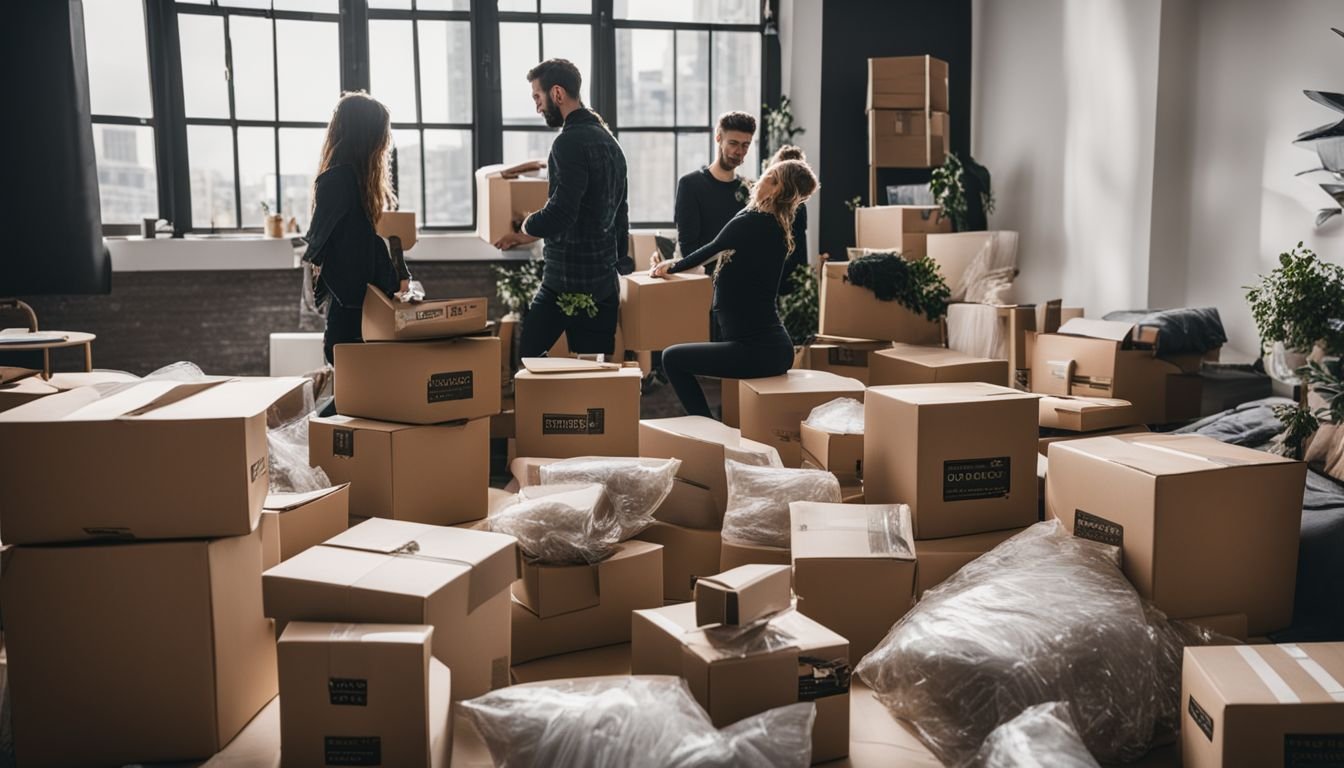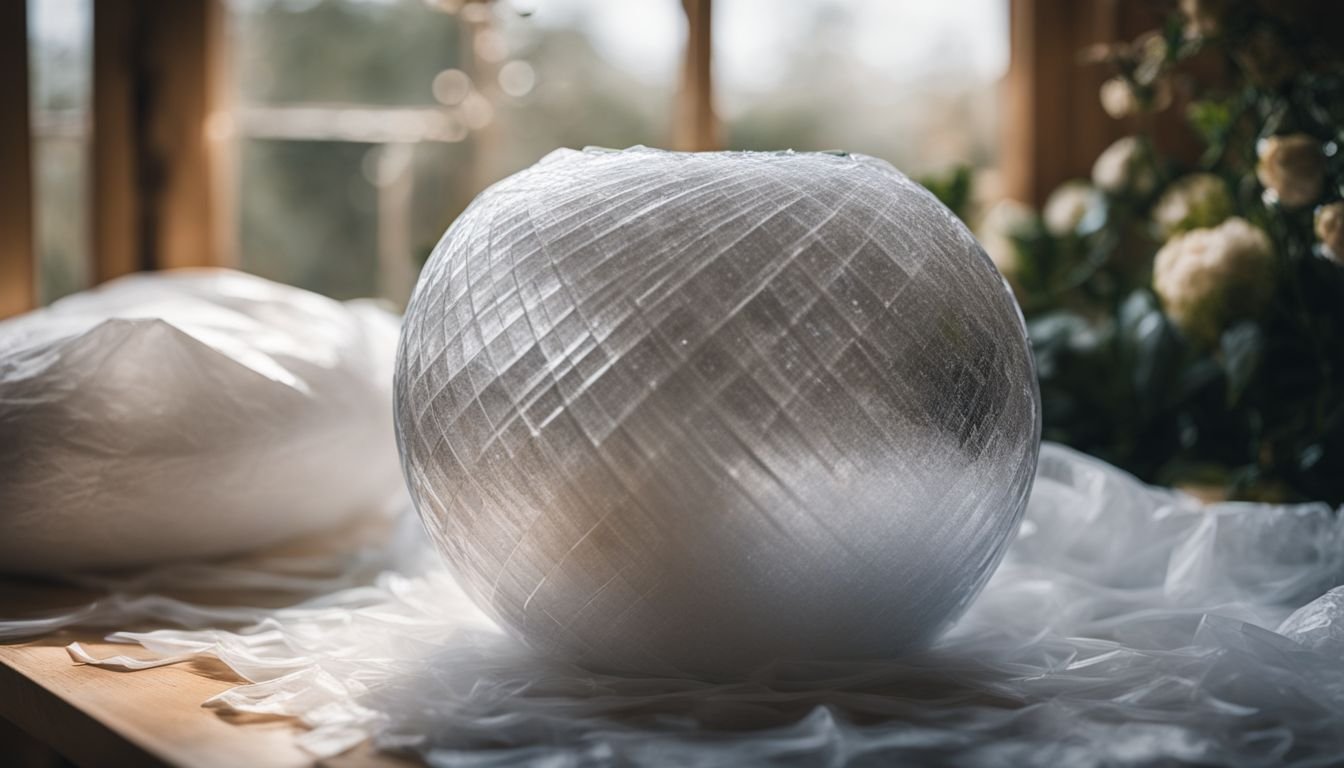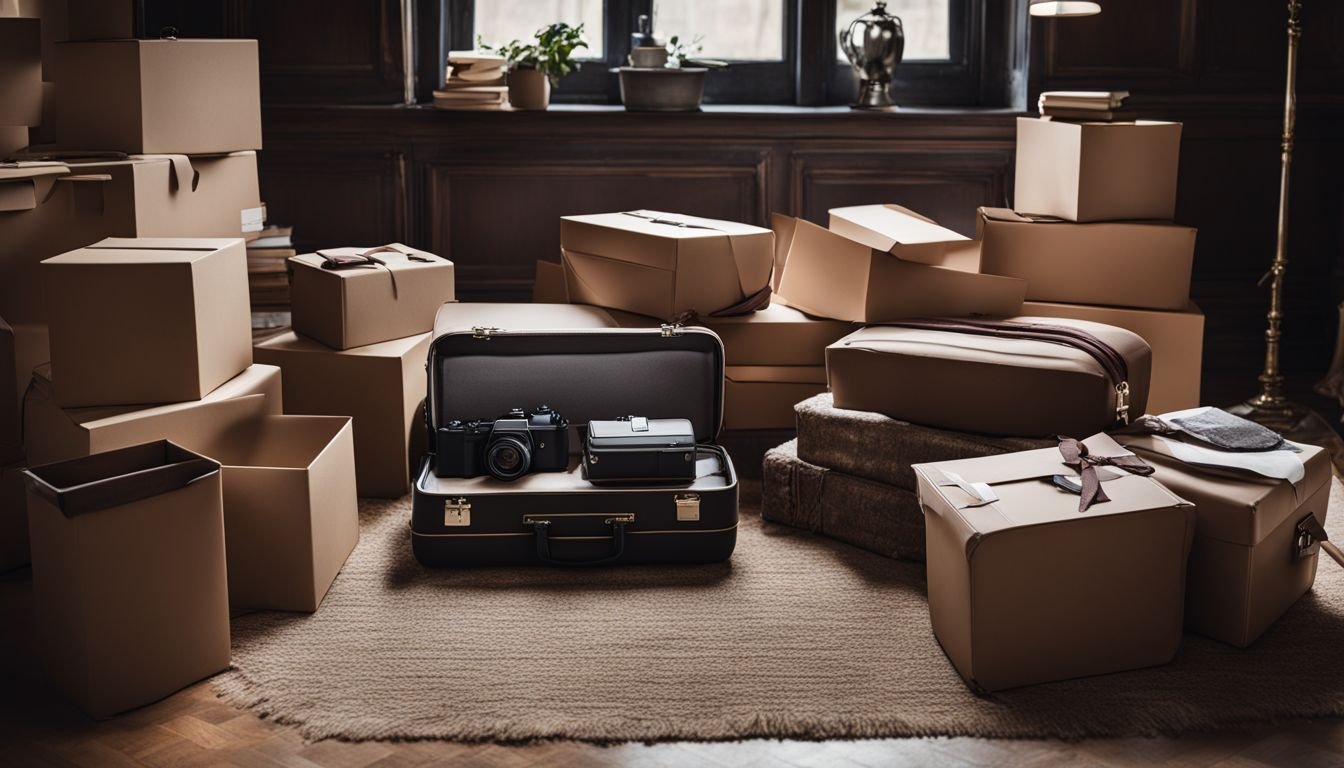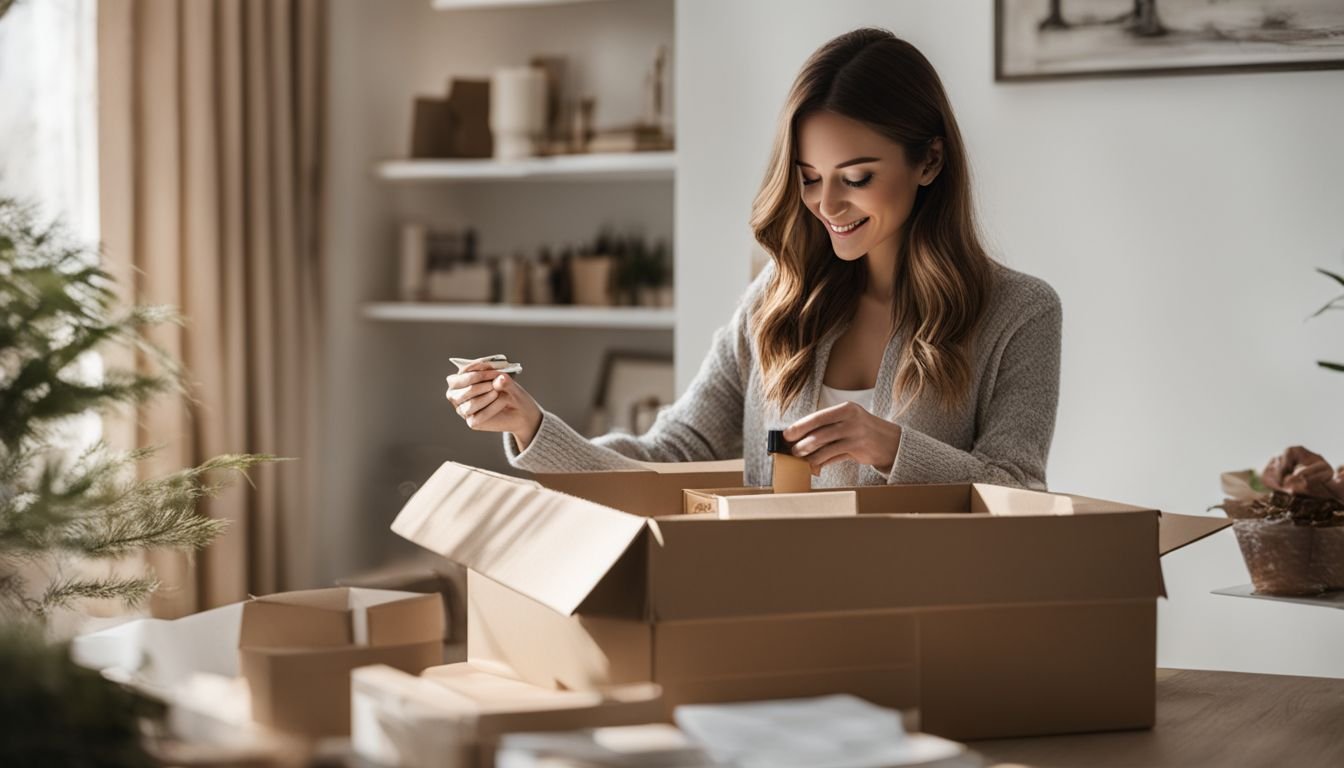Moving Out? Ten Tips For Efficient Packing Up Your Stuff
Moving Out? Ten Tips For Efficient Packing Up Your Stuff
Moving can be an overwhelming endeavor, with a tangled web of logistics and personal belongings threatening to disrupt the peace. Drawing on my extensive knowledge as an organization expert who has guided countless clients through 40 successful moves, I understand the pitfalls of packing and the secrets to doing it efficiently.
My expertise ensures you'll conquer common moving challenges with finesse, turning potential chaos into a straightforward process.
Savvy movers know that decluttering before diving into boxing up your life's treasures is not just advice—it's essential for a streamlined transition. By embracing these insider tips rooted in experience, readers will unlock proven strategies for making their next move smooth and stress-free.
Ready to transform moving day dread into packing prowess? Let’s explore how simple shifts in strategy can lead to big wins in efficiency.
The Importance of Properly Packing for a Move
Properly packing for a move is crucial to avoid damages to your items, make the unpacking process easier, and ultimately save time and money. It ensures that everything arrives at your new home in good condition and makes the transition smoother.
Avoiding damages to items
Wrapping your breakables in bubble wrap or padded materials ensures they survive the move without a scratch. Heavy items need to go on the bottom of your boxes, while lighter ones should be placed on top, protecting delicate pieces from getting crushed.
Pack each box tightly, leaving no empty spaces where contents can shift and break. For electronics and gadgets that are especially vulnerable, use original packaging whenever possible as it provides the best protection.
As you transition into making unpacking a breeze, remember these strategies will not only keep your valuables safe but also set the stage for a smooth start in your new home.
Making the unpacking process easier
Streamline your move by using color-coded labels for each box, indicating which room they belong in. This visual system allows you to sort the boxes quickly upon arrival at your new home.
Opt for clear plastic bins when packing items from different categories; this way, you can identify what's inside without opening them, making it a breeze to find essentials after a tiring move.
Keep things grouped together—kitchen with kitchen, bathroom with bathroom—to maintain organization and reduce time spent hunting down where everything should go.
Securely pack and protect delicate items like dishes and glassware with bubble wrap or newspapers to prevent breakage during transit. Remember that efficient packing is not just about saving space but also securing your belongings so they arrive in one piece.
With these strategies in place, unpacking will be less of an ordeal and more of an orderly transition into your new residence.
Next up: Dive into "Ten Tips for Efficient Packing" where we outline smart packing tactics that save both time and energy on moving day.
Saving time and money
Efficient packing not only streamlines the unpacking process but also cuts down on moving costs. Picking the right size boxes for your items eliminates wasted space, which means you can rent a smaller moving truck or make fewer trips.
Placing heavy items at the bottom and lighter ones on top protects your belongings from damage, saving you money on potential repairs or replacements. By avoiding empty spaces in the boxes, you ensure that everything arrives intact, reducing the time spent troubleshooting and repurchasing broken items.
Furthermore, using containers you already have like suitcases for books or duffle bags for clothes can dramatically reduce expenses on packing supplies. Hampers and laundry baskets double as boxes; not only do they hold a lot of stuff but also make it easier to carry bulky items.
These simple changes in how you pack could save hours of work and prevent spending extra cash on materials that are often used just once then thrown away. Embracing these packing hacks ensures a smooth move without breaking the bank or your back.
Ten Tips for Efficient Packing
When it comes to efficient packing, declutter before packing and use proper packing materials to protect your belongings. Label boxes clearly, pack by room, and utilize space efficiently to make the process smoother.
Protect fragile items and keep important documents with you for easy access during the move. Lastly, take photos of electronic setups for an easier set-up at your new place.
Declutter before packing
Before packing, it's important to declutter your belongings. Start by sorting through each room and decide what to keep, donate or discard. This process will lighten your load, making packing more manageable and efficient.
It also ensures that you don't waste time and energy moving items you no longer need or use.
Consider holding a yard sale or donating gently used items to minimize the amount of belongings you'll need to pack. By decluttering before packing, you'll also make unpacking at your new home much easier as you won't be overwhelmed with unnecessary items.
Use proper packing materials
After decluttering your belongings, it's vital to gather the right packing materials to ensure a smooth and secure move. Consider using sturdy boxes in various sizes to accommodate different items, preventing overpacking or underutilization of space.
Bubble wrap, packing peanuts, and foam pouches help protect fragile items such as glassware, electronics, and delicate decor pieces. Additionally, invest in quality packing tape for securing boxes and preventing potential damage during transportation.
To keep clothes free from wrinkles and dust, utilize wardrobe boxes that allow hanging clothing directly from your closet to the box. Remember also to consider heavy-duty plastic bags for bedding and linens or even furniture covers for added protection against dirt or scratches during transit.
Label boxes clearly
Clearly labeling your moving boxes is crucial for a smooth transition. Use a permanent marker to write the contents and destination room on each box. This will make unpacking easier and avoid confusion when settling into your new home.
Organizing by room will help movers know where to place each box, saving you time during the unloading process. Additionally, consider color-coding your labels to further streamline the sorting process upon arrival at your new residence.
Lastly, be sure to clearly mark boxes containing fragile items or essential belongings with "FRAGILE" or "OPEN FIRST" labels for added convenience and safety.
Pack by room
Pack your belongings by room to make the unpacking process a breeze. Start with one area of your home, such as the kitchen or living room, and pack all items belonging to that room into clearly labeled boxes.
This will help you stay organized during the move and ensure that items are easily accessible when it's time to unpack at your new place.
Utilize this method for each room in your house, ensuring that similar items remain together. By packing by room, you'll streamline the moving process and avoid any confusion when it comes time to settle into your new space.
Protect fragile items
Packaging fragile items requires special attention to ensure they reach your new home in one piece. Use bubble wrap, packing paper, or foam cushioning to protect delicate belongings such as glassware and ceramics.
Place heavier items at the bottom of the boxes and lighter ones on top to prevent crushing delicate objects during transit. Keep in mind that proper cushioning and secure packaging will help safeguard your fragile items from damage throughout the moving process.
Utilize space efficiently
To efficiently pack up your stuff, it's critical to make the most of the available space. Utilizing space effectively means filling boxes to their capacity without overloading them.
When packing, remember to place heavier items at the bottom and lighter ones on top to avoid damage. Additionally, consider using hampers, laundry baskets, dresser drawers, duffle bags, and garbage bags to pack clothes and lightweight items.
Suitcases can also be handy for transporting heavy or awkwardly shaped items that won't fit in standard boxes such as books and serving dishes.
Pack a essentials box
Gather all your must-haves in one easily accessible essentials box. Include daily necessities like toiletries, medications, a change of clothes, important documents, phone chargers, and any other items you can't go without for a day or two.
Label the box clearly and keep it with you during the move to ensure quick access to essential items as soon as you arrive at your new home.
Protect fragile items by wrapping them securely within the essentials box using bubble wrap or packing paper. Additionally, pack small tools such as scissors or multi-tools to help with potential assembly tasks upon arrival.
Use plastic wrap for liquids
When packing liquids for your move, utilizing plastic wrap can prevent messy spills and leaks. Wrap the openings of bottles tightly with plastic wrap before screwing on the lids to create an extra layer of protection.
For items like shampoos, lotions, and cleaning products, unscrew the lid, cover the bottle's opening with plastic wrap, and then reseal it with the lid. This simple step can save you from dealing with a sticky or soapy mess upon arrival at your new home.
Consider transferring any essential oils, cooking oils, or other liquid items to sealable plastic bags for an added layer of protection against potential leaks during transit. Using this technique will help ensure that your belongings arrive safely and avoid any unnecessary clean-up tasks once you've moved in.
Keep important documents with you
To ensure a smooth transition into your new home, it's important to keep all of your essential documents with you during the move. This includes items such as passports, birth certificates, social security cards, insurance policies, medical records, and any legal or financial documents.
By keeping these important papers close at hand rather than packed away in boxes or moving trucks, you can avoid the risk of misplacement or damage during the moving process.
In addition to physical copies of important documents, consider creating digital backups that can be easily accessed on a smartphone or tablet. This extra precaution provides peace of mind knowing that even if something were to happen to the physical copies during the move, you still have access to vital information electronically.
Take photos of electronic setups
When it comes to safeguarding your electronic setups, taking photos before disassembling them can be incredibly helpful during the reassembly process. Snap pictures of how all the wires and components are connected so that you have a visual reference when setting everything up in your new home.
This simple step can save you from confusion and frustration later on.
Additionally, label the cords with small stickers or colored tape corresponding to their respective ports or components to ensure a seamless reconnection process. These techniques will help you avoid stress and wasted time as you settle into your new space.
Helpful Resources for Packing and Moving
Looking for professional help with your move? Consider hiring a moving cleaning service to make the process easier. They can provide essential move-out cleaning checklists and ensure that you leave your old space in top condition.
Be sure to find reliable moving cleaning services in your area to help facilitate a smooth transition to your new home.
Professional moving cleaning services
Hiring professional moving cleaning services can alleviate the stress of cleaning your old home while managing all the details of a move. These services offer thorough cleaning, ensuring that you leave your previous residence spotless.
Experienced professionals use specialized equipment and environmentally friendly products to clean every nook and cranny efficiently. By hiring these experts, you can focus on settling into your new home with peace of mind, knowing that one critical aspect of the relocation process is being taken care of professionally.
Utilizing professional moving cleaning services not only saves time but also guarantees a smoothly transitioned move without worrying about leaving behind any mess. Now let's turn our attention to essential move-out cleaning checklist for a seamless relocation process.
Birch Specialty Cleaning Company offers Move In and Move Out cleaning services. If you would like to reduce the stress of moving, give us a call today!
Essential move-out cleaning checklist
When moving out, it's essential to leave your old space clean and tidy for the next occupants. Here is a comprehensive move-out cleaning checklist to ensure you don't miss anything important:
Dust all surfaces, including shelves, baseboards, light fixtures, and ceiling fans.
Clean windows, mirrors, and glass surfaces throughout the house.
Vacuum or mop all floors, paying attention to corners and under furniture.
Wipe down kitchen cabinets, countertops, and appliances inside and out.
Scrub the oven and stovetop thoroughly to remove any grease or food residue.
Disinfect sinks, faucets, and drains in the kitchen and bathrooms.
Sanitize toilets, bathtubs, showers, and bathroom tiles.
Empty and clean out all closets and storage spaces.
Remove any cobwebs from ceilings, corners, or hidden areas.
Dispose of any trash or unwanted items responsibly.
Finding reliable moving cleaning services in your area
Birch Specialty Cleaning Company offers move in, move out, deep and standard cleaning services in the DFW area. If you are looking for a cleaning service, please give us a call or simply book online!
Conclusion
In conclusion, efficient packing is crucial for a smooth move. By following these practical tips, you can simplify the process and save time and effort. Have you thought about how these strategies will make your next move more efficient? Consider implementing them to experience a stress-free relocation.
The impact of proper packing can result in a hassle-free transition to your new home. For further assistance, look into professional moving cleaning services or essential move-out cleaning checklists.
Make your next move an organized and successful one!
FAQs
1. How can I make sure my packing is efficient when moving out?
To pack efficiently for a move, you should organize your stuff, follow a checklist, and use smart packing strategies like labeling boxes and grouping items together.
2. Are there any hacks to help with packing when relocating?
Yes! Packing hacks for moving include using clothes to wrap fragile items, filling suitcases with heavy things, and making an essentials box for the first day after the move.
3. What are some tips for a smooth house move?
Tips for a smooth move involve starting early, decluttering before you pack, clearly labeling your boxes by room, and creating an inventory of your belongings.
4. Can I still pack in a hurry if I'm moving quickly?
If you're moving in a hurry, prioritize important items first and use packing tips that save time like bundling hangers together or keeping clothes in dresser drawers.
5. What should I look out for when packing up my stuff to ensure it's stress-free?
For stress-free moving, plan ahead with an efficient packing strategy; don't overfill boxes; protect breakables; keep essential tools handy; ask friends to help; take breaks as needed.














